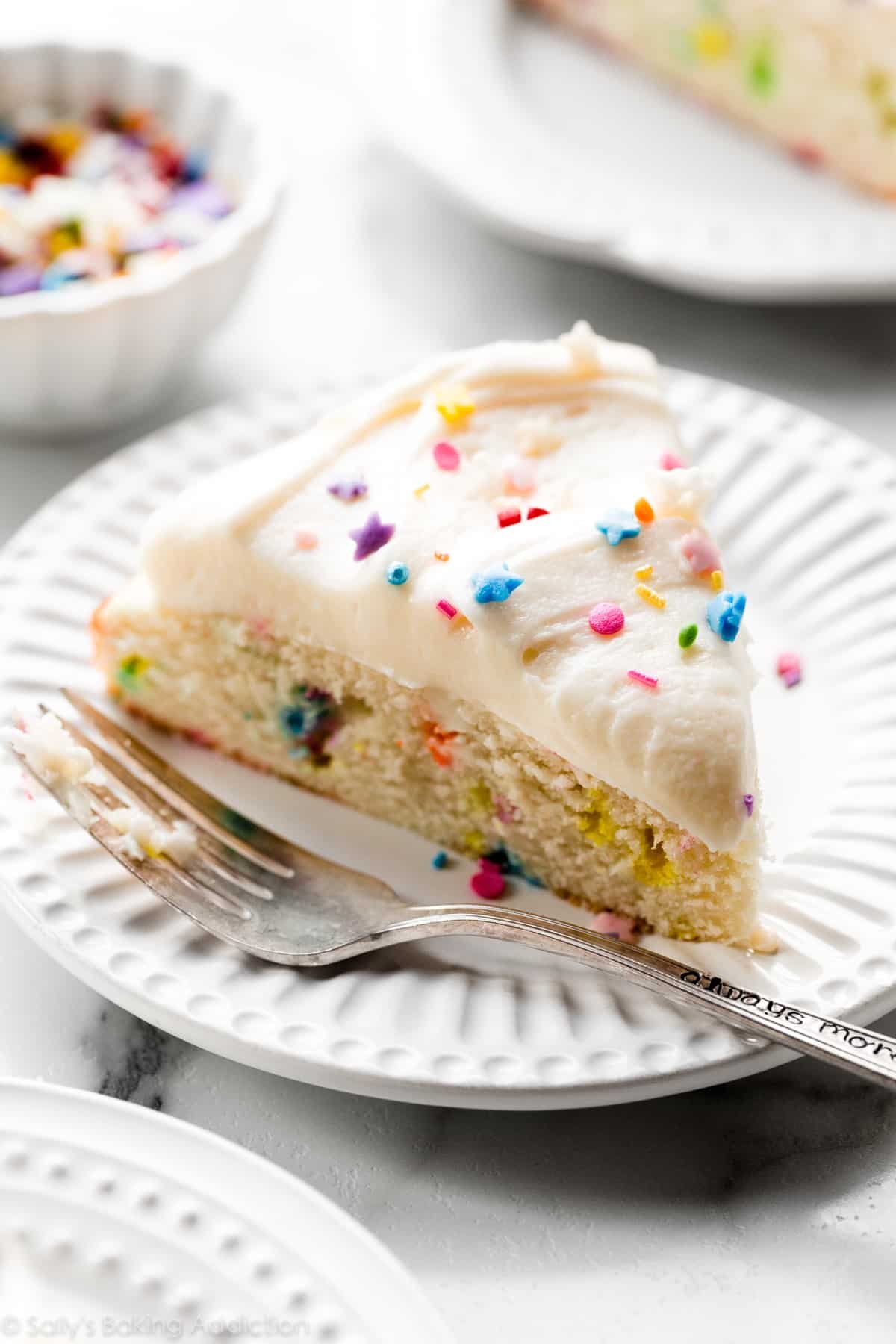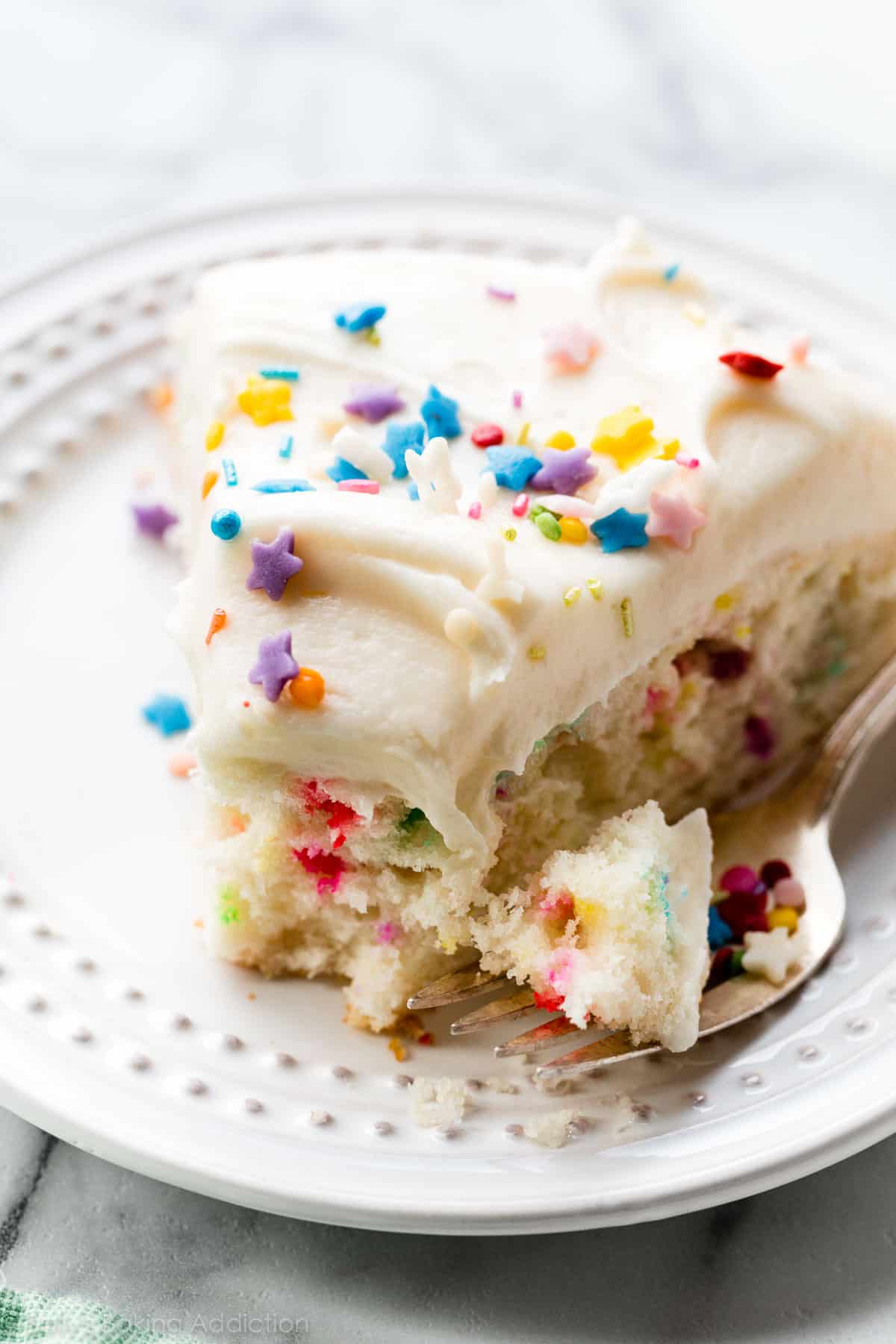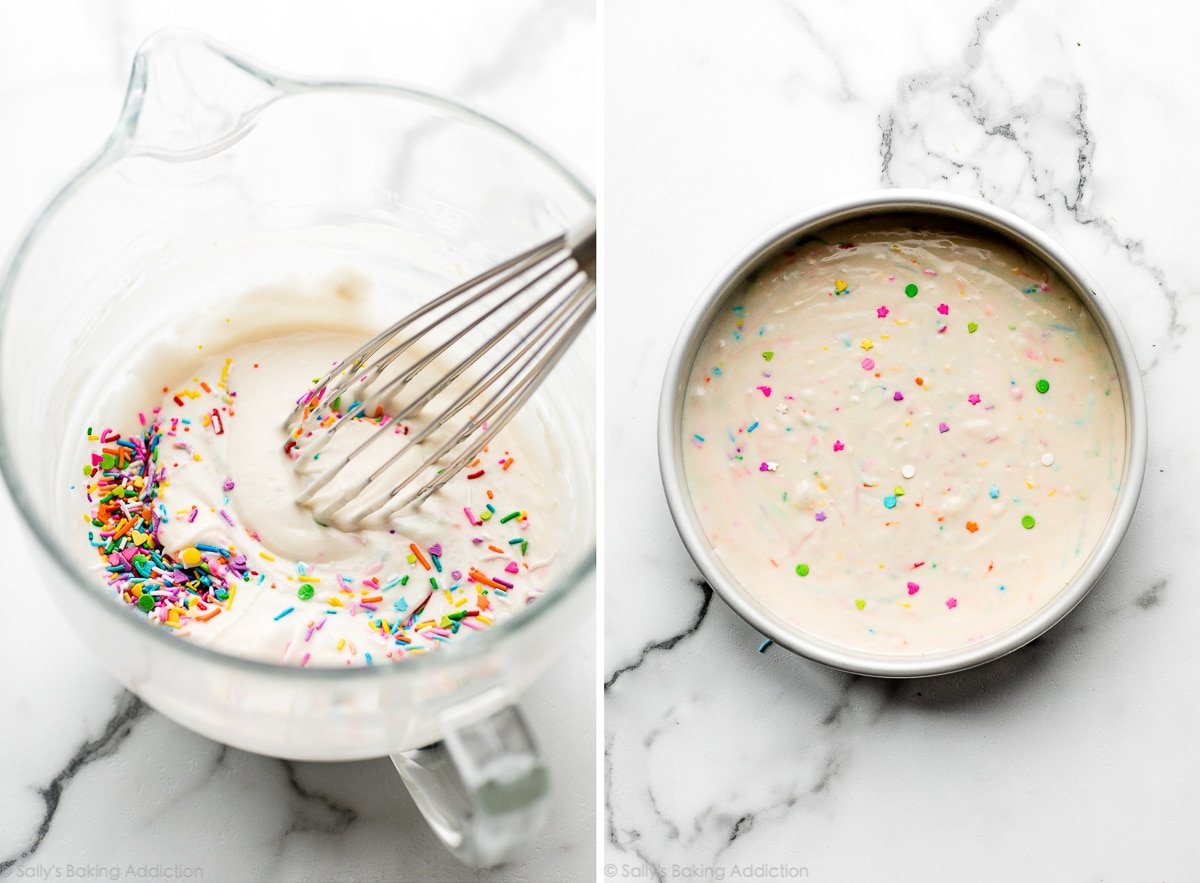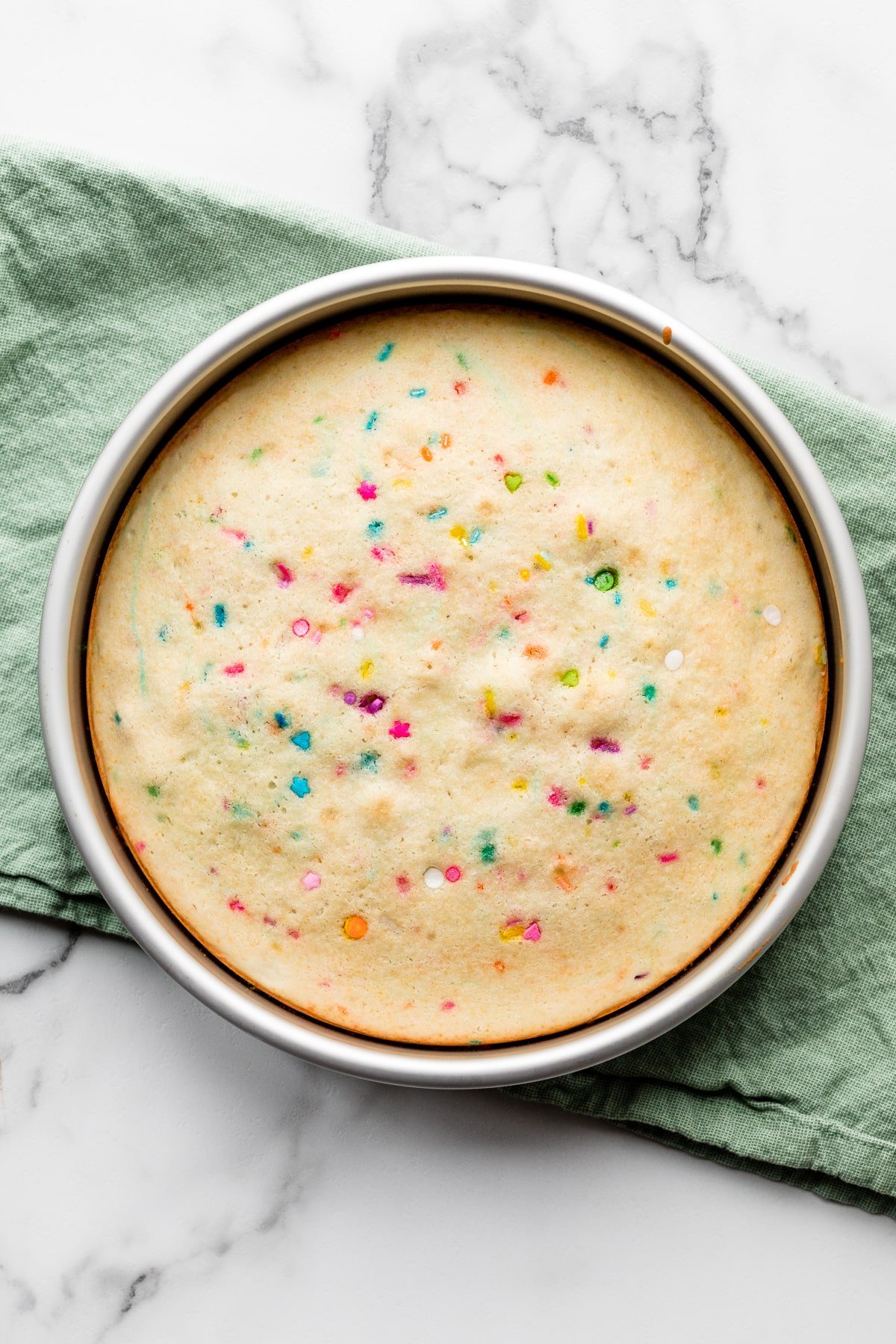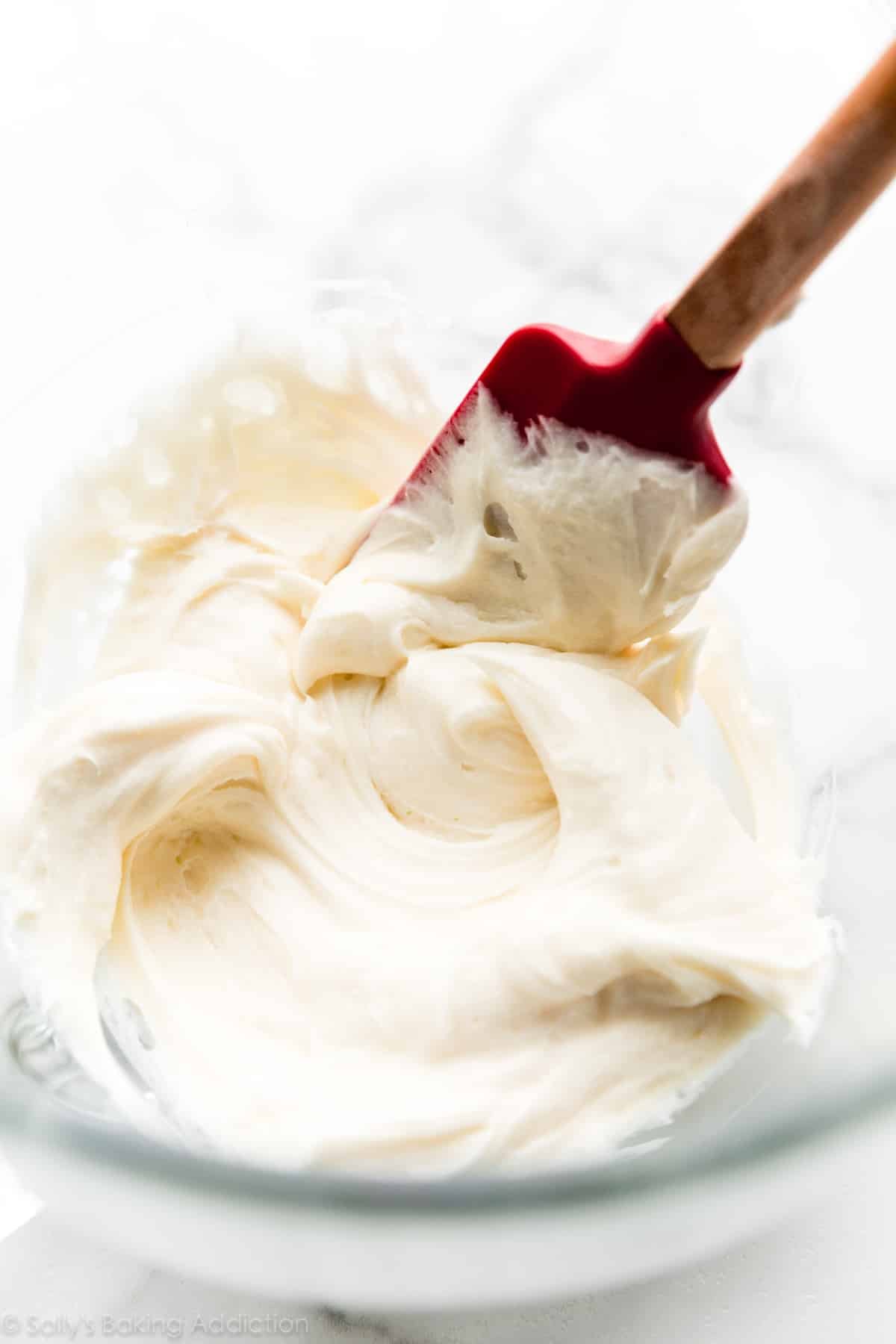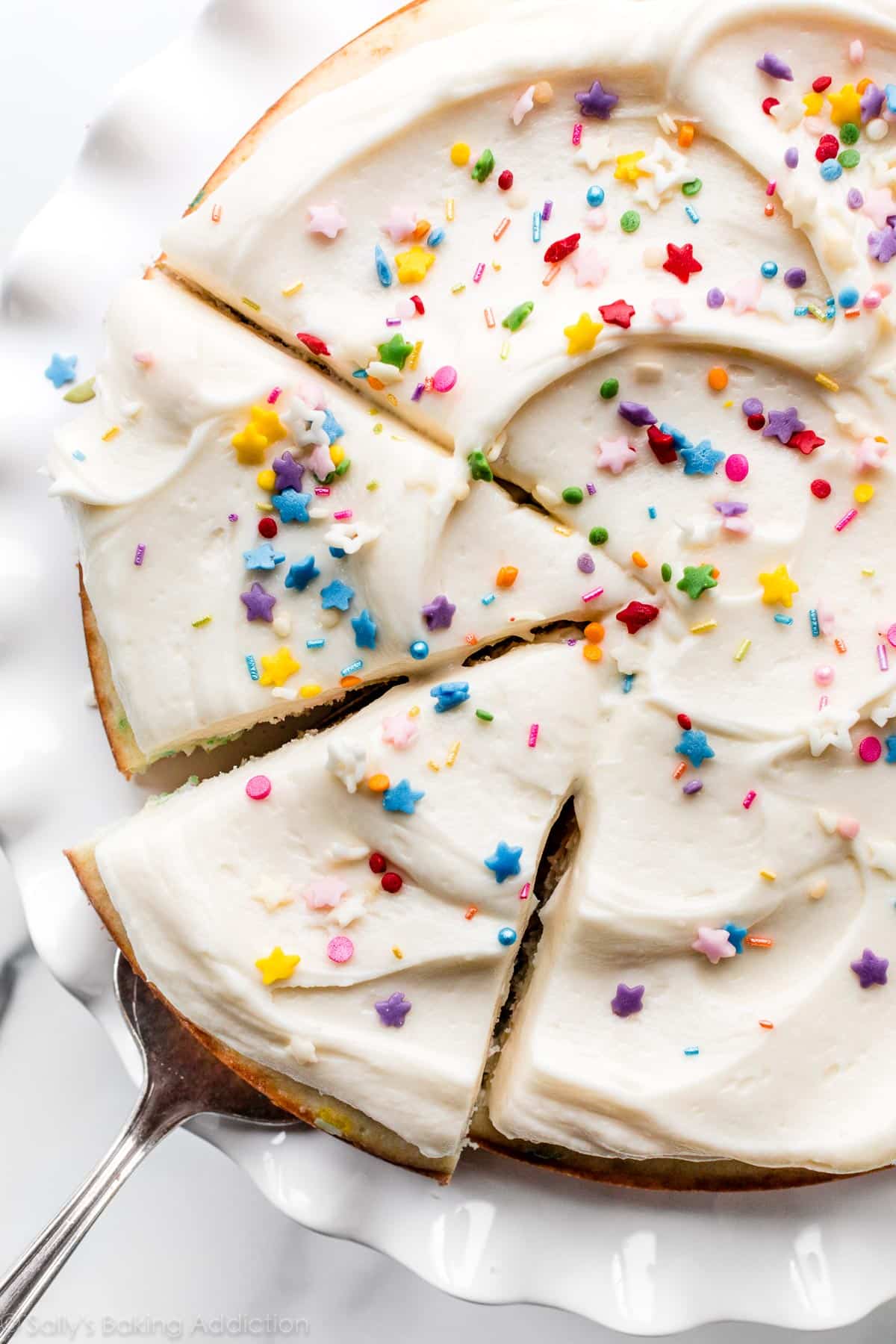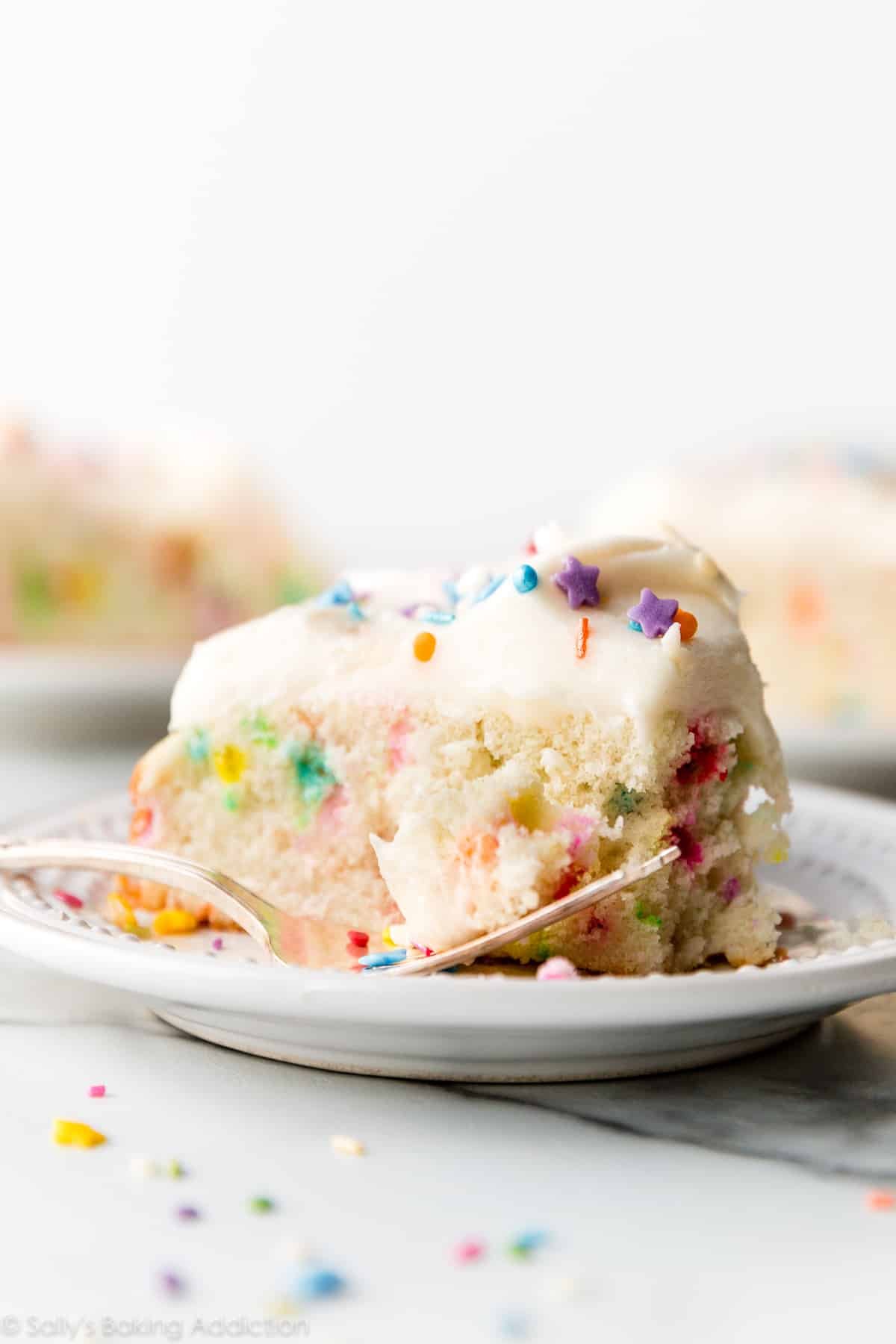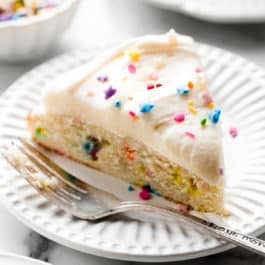There’s a lot of recipe testing and baking science background discussed in this post, so feel free to skip it by clicking the button above. Do you remember when I shared an updated recipe for my pineapple upside down cake? I love looking back at older recipes, reading your reviews, and applying new techniques to make the recipes even better. With constant practice and recipe testing comes the opportunity to bring you the best dessert recipes that I can. Baking is truly a science and I’m happy to continue to deliver you well tested and improved recipes!
Improved Cake Recipe – Read the Difference
I published a homemade sprinkle cake recipe several years ago. It’s a wonderful one layer cake, but it often tasted overly dense and was prone to overflowing. Though I kept the original recipe written in the notes below, I want to share my new and improved version with you. This new sprinkle cake recipe, written below, is much softer than the original. Using (1) creamed butter instead of melted, (2) cake flour instead of all-purpose flour, (3) white sugar instead of brown sugar + white, and (4) just egg whites all guarantee a HUGE textural difference. I adapted it from my sprinkle cupcakes and it’s nearly the same base as my new pineapple upside down cake, too. We’re actually using the same ingredients in the updated recipe—just in different forms, ratios, and amounts.
Old Cake Recipe (in notes below): Overly heavy, dense, overflowed New Cake Recipe (below): Softer, pleasantly moist, reduced amount of batter
This Easy Homemade Sprinkle Cake Is:
Soft, cakey, & fluffy A smaller, 1 layer version of this confetti cake Buttery & moist Completely homemade and better than a box mix Loaded with colorful sprinkles Topped with extra creamy vanilla buttercream The same batter we use for tie dye cake (so fun!)
Overview of Ingredients & Why They Work
Cake Flour: Lighter than all-purpose flour, cake flour produces a soft crumb. Baking Powder & Baking Soda: The two add plenty of lift. Salt: Balances the sweetness. Butter: Instead of melted butter, use 6 Tablespoons of softened butter. Creaming butter and sugar guarantees a buttery soft crumb. Sugar: White granulated sugar sweetens and tenderizes the cake. Egg Whites: Egg whites create the fluffiest white cake and they’re doing the same job here. Egg yolks, though excellent for moisture, weigh a cake down. Sometimes they’re imperative for flavor, such as in my yellow cake recipe, but we don’t need them in this fluffy sprinkle cake. The sour cream makes up for the lost moisture. And so there’s no waste, here are my recipes using egg yolks. Vanilla Extract: Flavor. Homemade vanilla extract is excellent and really shines through in this cake! Sour Cream: Along with cake flour and egg whites, sour cream promises a tender cake crumb. Plain yogurt works in a pinch. Milk: Liquid is key in most cakes because it thins out the batter.
Best Sprinkles to Use
I’ve been baking cake and cupcake batters with sprinkles for quite awhile and have learned exactly what works—and what doesn’t. Here’s what I know:
Sprinkles sold in the US are intensely colored where sprinkles sold in other regions tend to lose their color when baked. I actually used Sweetapolia “Bright Skies” medley in the pictured cake batter. Use confetti quins (the little discs) if you can. They rarely bleed their color in batter. Do not use nonpareils (the little balls) in cake batter. They bleed their color. Naturally colored sprinkles are wonderful in cookies and as decoration, but—depending on the brand—can lose their color in cake batter. I actually use and love this Starfetti mix. They seem to hold their color wonderfully when baked in cake batter. They’re what I used to decorate the top of this cake.
Vanilla Buttercream
We’re using a slightly scaled down version of my favorite vanilla buttercream. (Although strawberry buttercream frosting would be fantastic here, too.) Creamy, silky, and smooth, this vanilla buttercream is perfect on birthday cakes, cupcakes, chocolate cupcakes, cookies, and more. My #1 tip is to make sure that you use room temperature heavy cream/half-and-half/milk. Using cold liquid can cause the buttercream to break and separate. You need room temperature butter anyway, so simply set out the measured liquid when you set out the butter. Does your buttercream have air bubbles? See vanilla buttercream for tips to get rid of them.
Other Size Cakes
9×13-Inch: Double this recipe for a 9×13-inch quarter sheet cake. Bake at 350°F (177°C) for 40 minutes or until a toothpick inserted in the center comes out clean. Top with vanilla buttercream, which is slightly scaled up from the frosting amounts here. I also have this vanilla sheet cake, but it’s denser than today’s cake. For a 12×17-inch jelly roll sheet, use my funfetti sheet cake recipe. 9-Inch Square: Follow the recipe below. The cake will be thinner and the bake time will be a few minutes shorter since a 9-inch square baking pan holds more batter than a 9-inch round cake pan. I recommend lining with a parchment paper square, just as instructed in step 1. Cupcakes: Make this sprinkle cupcakes recipe, which is essentially the same, only slightly scaled up. Same taste and texture. Bundt Cake: Doubling this recipe would be plenty for a 10-12 cup Bundt pan. Bake at 350°F (177°C). I’m unsure of the best bake time, but use a toothpick to test for doneness. Layer Cake: Use my 3 layer confetti cake recipe or try this 2 layer white cake recipe, which is just as light and fluffy. Gently stir about 1/2 cup (90g) sprinkles into the batter. Cookie Cake: Here is my favorite confetti sugar cookie cake.
